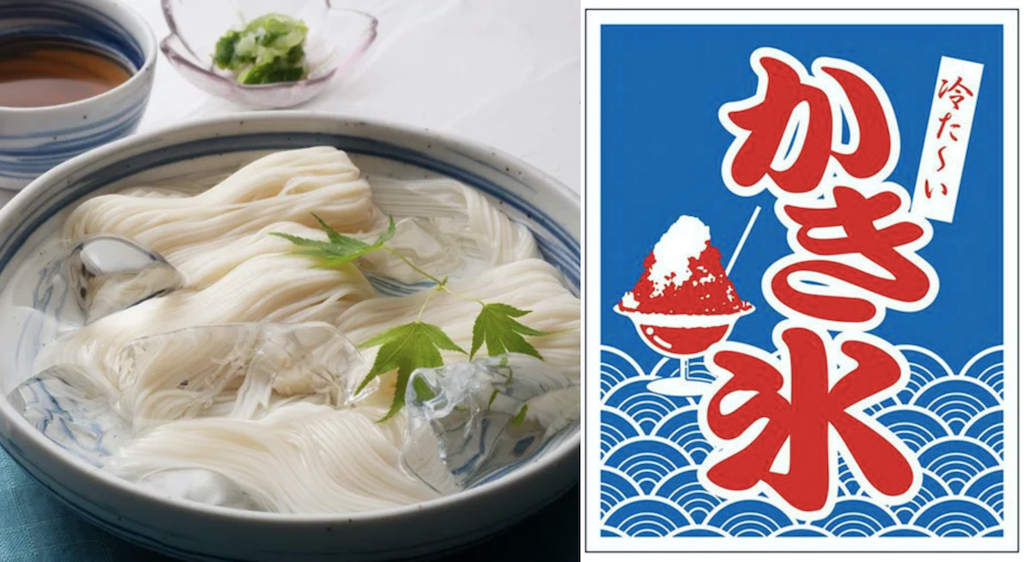The (relatively cool) rainy season has just begun throughout most of Japan, but make no mistake: the oppressive heat and humidity of summer is on its way. The best culinary counterattack on high temperatures and humidity is ICE.
Think glacier-like chunks of ice tinkling in glass bowls with swirls of sōmen noodles surrounding them… then imagine mounds of shaved ice with flavored syrups. The Japanese have been enjoying chilled treats such as these for more than a thousand years, long before modern refrigeration.
Sei Shōnagon wrote of crushed ice drizzled with sweet syrup – clearly the forerunner of today’s kaki-gōri confections – in her Pillow Book, a bawdy collection of gossipy essays that circulated among courtiers in the Heian period (794-1185 AD).
Skipping ahead to the Meiji period (1868-1912), I pick up the tale of Japanese ice with Nakagawa Kahei who worked in the British Embassy’s Yokohama kitchens. At the time ice was truly a luxury item among foreign residents. Shipped from Boston, it was wildly expensive! Recognizing a fine business opportunity, Mr. Nakagawa tried sourcing blocks of natural ice, domestically. In 1871 he succeeded with ice sourced from Hokkaido, near Hakodate.
With less costly ice the popularity of kaki-gōri spread rapidly among ordinary folks. By the turn of the 20th century, shaved ices were being drizzled with various syrups: classic Japanese flavors such as matcha green tea and vibrantly colored fruit-flavors, too. They remain favorites on kanmi-dokoro (sweets parlor) menus throughout Japan.
Stay connected.
I’m looking forward to your comments on the items I post to my Facebook page!
Follow me on Twitter!
I do hope you like it!
Elizabeth Andoh A Taste of Culture Culinary Arts Program Setagaya-ku, Tokyo 158-0095, Japan


Comments